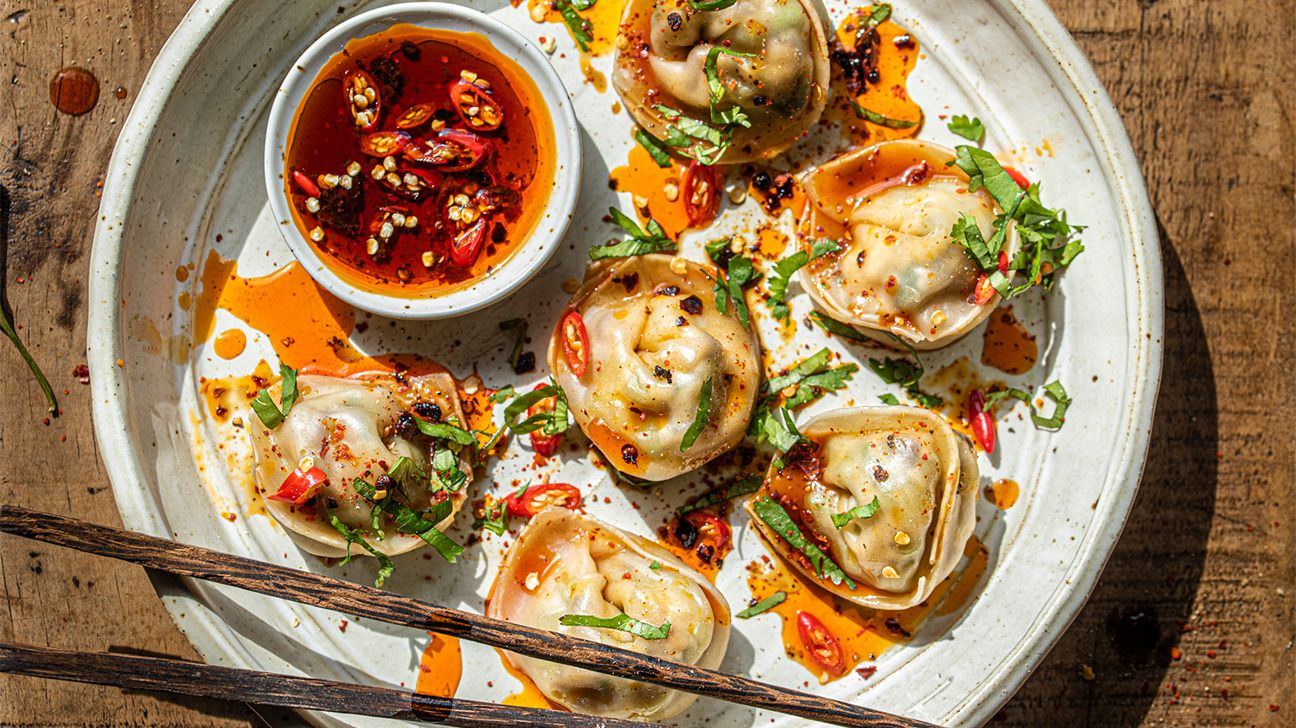Who doesn’t love a good hot sauce and the way it makes humdrum dishes sing? I can empathize with the obsessives who bring their own personal bottle of Tabasco everywhere, or the zealots who insist that Sriracha makes everything better.
But sometimes there are even better ways to amp up your food. If I had to nominate an all-purpose condiment for spicing up everything under the sun, it wouldn’t be a sauce. It would be chili oil, hands down.

Let me explain: Hot sauce almost always contains a fair amount of vinegar and salt, which are necessary to preserve its fresh ingredients. Those tangy, salty elements are fine, even essential in many instances (ahem, buffalo wings).
But there are other times when they just tend to get in the way. Hot sauce can make soup unpleasantly astringent, or mask the flavor of delicate dishes in a cloying way. Chili oil, on the other hand, infuses its oil base with dry ingredients, which lend their spice and aromatics without the aid of harsh preservatives.
It makes sense that you’ll find chili oil in cuisines known for their liberal use of seasonings and contrasting tastes. The stuff has its place on tables throughout Asia (Sichuan cuisine is where it comes in most prominently). Rather than butting heads with the heady flavors of, say, soy sauce or rice wine, it simply adds an accent that rests on top.
You’ll also find it in places like Calabria, Italy, which is famous for its vibrant red chilis, or in Veracruz, Mexico, where a thick salsa macha is made using local peppers.
You can pick up chili oil in Asian groceries or in the international section of many supermarkets. But it’s also pretty easy to make at home, and well worth it too.
Not only does it taste so much more vivid and vibrant, you can customize it with different spices and chilis. Personally, I like to keep on hand a version I make with gochugaru (Korean coarse chili flakes), but you might prefer to use star anise, cinnamon, or cardamom.
Long story short: Chili oil is a crave-worthy condiment, and it’s not just for Asian cuisine. Add it to eggs, pasta, pizza, seafood, and anything else that could use some spice — even ice cream. I’ve got plenty of ideas below.
Many of the following recipes include their own instructions for making an infused chili oil, if you’re looking for a place to start. (Or you can always use our version.) Either way, you might end up with extras of your new favorite condiment that brings the spice!
Noodles from the western Chinese city of Xian are known for their signature balance of hot and sour. While a mixture of seasoned soy sauce and vinegar brings the tang, its the chili oil rife with cumin, coriander, star anise, and more that makes this dish leap into a wildly aromatic flavor dimension.
Sichuan’s most famous noodle dish relies on an oil infused with chilis and peppercorns. In the true spirit of ma la, it’s part spicy and part numbing, with a wave of citrusy overtones.
Without a slick of vinegar and chili oil to swim around in, Sichuan wontons would be just a plain dish of pork wrapped in dough. Make sure to really lay on the condiments with this one.
Tomatoes dressed in olive oil and sea salt are one of summer’s simple pleasures. But when you add chilis and spices into the mix, that combination suddenly gains a whole new profile that’s full of flaming intensity.
In the wrong hands, this delicate, Italian-style steamed fish could easily be overwhelmed by aggressive seasonings. An olive oil infused with Calabrian pepper ensures that it has the right amount of spice, however, without going too far over the top.
Need a pick me up for your morning eggs? Chili oil will deliver a tastebud-awakening fire that cuts through all that yolky richness. Try it with fried eggs and steamed rice for breakfast, lunch, or dinner.
Get the creamy eggs with garlicky greens, avocado, and chili oil recipe.
Using regular ol’ butter to flavor your popcorn makes butter seem so basic. This recipe adds cinnamon and sugar to the equation, for an unexpected meeting of spicy and sweet.
Sriracha is great and all, but a little dab of chili oil is a nice change of pace for spicing up your sushi (which is easier to make at home than you might think, not to mention fun).
You don’t need a recipe for this one, unless you’re making both components from scratch — in which case, check out some of our favorite recipes, or see how to make ice cream without a machine.
Whether you use store-bought or homemade, this simple and unexpected combo is a true revelation. The crispy, spicy chili oil contrasts beautifully with the cool, creamy scoops of vanilla. You may never go back to hot fudge again.
